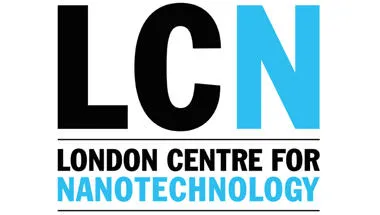
Dr Graeme Hogarth
Reader in Inorganic Chemistry
- PGR Tutor
- PGR SSLC Chair
Research interests
- Chemistry
Contact details
Biography
Dr Graeme Hogarth is a Reader in Inorganic Chemistry in the Department of Chemistry, King’s College London. He did both a BSc and PhD at Bristol University, the latter in diiron chemistry followed by post-docs at the University of Waterloo and Inorganic Chemistry Lab in Oxford. He was on the staff at UCL for 25 years and moved to KCL in early 2014. His research focus centres on applications of transition metal chemistry. He has co-authored ca. 300 publications and has specialist expertise in areas including oxo-imido complexes, low valent metal clusters, diiron chemistry, biomimics of [FeFe]-ases, dithiocarbamate chemistry and the use of single source precursors towards the synthesis of nanoscale metal sulfides.
Research Interests
- Single source precursors
- Dithiocarbamate chemistry
- Nanoscale metal sulfides
- High entropy materials
Teaching
- Inorganic Chemistry 2
- Advanced Chemistry for Life Sciences
- Nanoscale and Extended Systems
- UG Research Methods Literature Review
- MSci Frontiers of Chemistry
- MSci Research Project & Dissertation
- MRes Research Project in Interdisciplinary Chemistry
Research profile
For more information on Dr Hogarths's research please his Research Portal page
The Hogarth Group
Postgraduate Researchers
- Rosie Nash
- Tannith-Jade Cole
- Xiang Xu
The Hogarth Group focusses on the development of novel single source precursors for the synthesis of metal-sulfide nanomaterials. Aims are to (i) develop low temperature SSPs allowing access to both very small nanoparticles (quantum dots) and meta-stable phases, (ii) design SSPs that work in water (for biomedical applications) and ionic liquids (for catalysis), (iii) fully understand molecular decomposition mechanisms to enable intelligent design of new SSPs.
Research

London Centre for Nanotechnology
The London Centre for Nanotechnology is a UK-based multidisciplinary enterprise operating at the forefront of science and technology. Its purpose is to solve global problems in information processing, healthcare, energy and the environment through the application of nanoscience and nanotechnology.
Research

London Centre for Nanotechnology
The London Centre for Nanotechnology is a UK-based multidisciplinary enterprise operating at the forefront of science and technology. Its purpose is to solve global problems in information processing, healthcare, energy and the environment through the application of nanoscience and nanotechnology.
